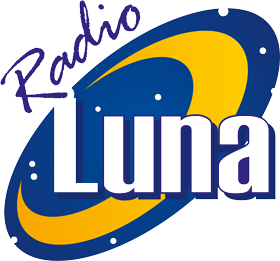
The system was directed by the head of Russia’s anti-doping laboratory, Grigory Rodchenkov, who sourced and controlled the supply of substances and provided oversight of hundreds of Russian athletes’ dosing and use via the country’s Sports Ministry. The effectiveness of the system was clear after Russia dominated the medals table at the 2010 Winter Olympics and then performed better than expected at the 2012 Summer Olympics, all while protecting most athletes from testing positive (McLaren, 2016a). Athletes in this system were well looked after; the quality of their doping substances and protection from reputational and economic ruin was improved as long https://ecosoberhouse.com/article/should-you-have-relationships-in-recovery/ as they remained within the system—a type of omerta. Rodchenkov described perfecting his protocol to maximise benefit, limit risk, and avoid detection, as well as his frustration at athletes who would use additional substances that put them at risk of testing positive (Ruiz & Schwirtz, 2016). The reports on Russia also included evidence that athletes had been extorted by various members of the Russian sport apparatus in exchange for keeping their doping and/or positive anti-doping tests from becoming public (McLaren, 2016b). Some take drugs to increase their strength and performance, while others take them to reduce pain and recover from injuries.
- Crucially, because their illegal use undermines the spirit-of-sport, they too are banned.
- For elite and professional athletes, the monetary incentives to win can be huge and provide a reason for athletes to use prohibited substances (Aubel & Ohl, 2014; Fincoeur, Cunningham & Ohl, 2018).
How to Prevent the Use of Performance Enhancing Drugs
- Vigilant testing and heavy sanctions stimulate athletes to use more dangerous substances and combinations for both masking and performance purposes.
- Furthermore, the blame is often shifted to the runner for her eating disorder and recurring injuries, rather than to the lack of information — or the misinformation — that she received.
- Anti-doping policies are underpinned by a sport culture in which doping is positioned as an issue of both morality and health.
- A Therapeutic Use Exemption allows an athlete to use an otherwise banned substance.
Current anti-doping measures rely primarily upon the punishment of athletes who use performance-enhancing drugs. The effectiveness of this is hotly debated, given that many athletes still use these drugs despite the potential consequences. The pressure that comes with being a competitive athlete with a team, fans, and family behind them can be intense, and in many cases, can prompt the abuse of alcohol or drugs in sport. It may reach an extent where the athlete negative effects of drugs in sport abuses the drug every day to help cope. Another point of view is that doping could be legalized to some extent using a drug whitelist and medical counseling, such that medical safety is ensured, with all usage published. Under such a system, it is likely that athletes would attempt to cheat by exceeding official limits to try to gain an advantage; this could be considered conjecture as drug amounts do not always correlate linearly with performance gains.
- Sporting Integrity Australia works closely with the World Anti-Doping Agency (WADA), an international agency set up to monitor the code.
- Public health approaches to PED use, including needle and syringe exchange programs and other harm reducing measures, have had wide uptake among people who use steroids in the UK (McVeigh & Begley, 2017).
- Over the years, their preferred methods for doing so included visual inspections, gynecological exams and chromosome testing.
- It is unclear what will be the final outcome of doping war, but new questions and issues constantly present new challenges for both groups.
Human Growth Hormone
Athletes who rely on being steady or stable in their sport, such as archers, shooters, dart players, and others, may turn to drug abuse in sports with beta-blockers like propranolol. It does not affect the actual mental anxiety but takes care of the physical manifestations. Side effects of these drugs include dizziness, cold extremities, insomnia, heart failure, and liver abnormalities. Performance-enhancing drugs (PEDs) are substances used to improve physical ability, notorious for their illegal use in athletic competitions. While these substances may not be illegal in general use, their clandestine use in sports, known as doping, is commonly prohibited. In countries where the use of these drugs is controlled, there is often a black market trade of smuggled or counterfeit drugs.
Performance Enhancing Drugs
- Diabetes, visual disturbances, hypertension, joint pain, and cardiomegaly can occur due to abuse of this prescription medication.
- Although some athletes may benefit in the short term from PED use, well-known cases like those of Lance Armstrong, Barry Bonds, and Marion Jones demonstrate that steroid use has serious consequences.
- WADA has also taken the lead in the development of the athlete biological passport concept.61 WADA’s athlete biological passport operating guidelines took effect in 2009.
- Performance-enhancing drugs elevate the importance of certain physical attributes, such as strength and stamina.
Athletes at the Olympic Games are tested for EPO through blood and urine tests. Stringent guidelines and regulations can lessen the danger of doping that has existed within some endurance sports. In general, the long-term effects of performance-enhancing drugs haven’t been studied enough. Athletes take human growth hormone, also called somatotropin, to build more muscle and do better at their sports.
Risk and enabling environments in sport: Systematic doping as harm reduction
Sporting authorities have banned many drugs because they may give an athlete an unfair advantage. Surprisingly, though, the word “drug” appears only once in the entire report, and there is nothing to indicate what sports are expected to do by way of mitigating against illicit drug use among athletes. Third, the AFL should expand its illicit drug policy to accommodate the AFL Women’s league, and to consider ways to mitigate the risk of illicit drug use among non-playing staff across both the AFL and AFLW.
How Are Athletes Who Take Drugs Get Punished?










